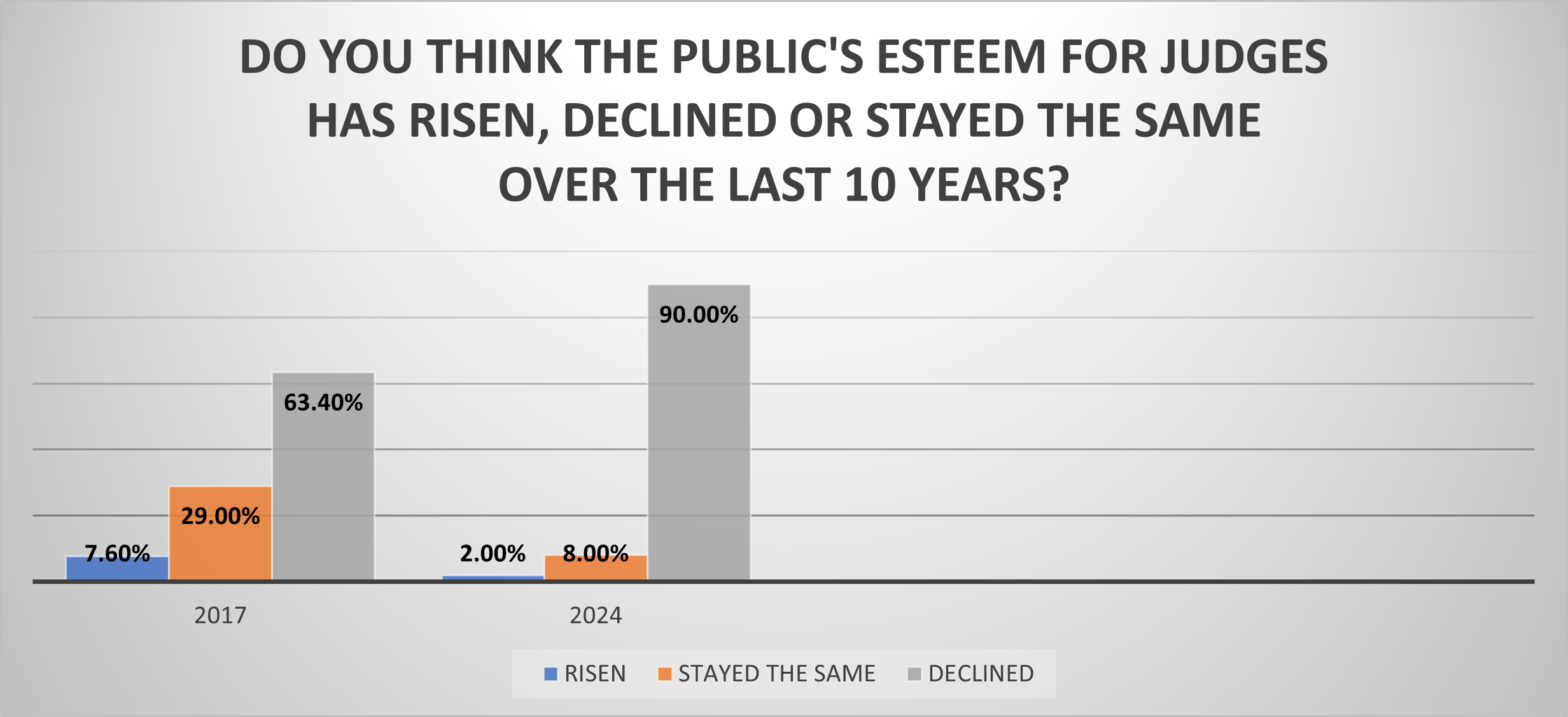
By Hon. Chad Schmucker (Ret.)
President, The National Judicial College
“Justice delayed is justice denied.”1 Backlogged cases and insufficient caseflow management undermine the timely disposition of cases and threaten public confidence in the judicial system. Strong claims.
But without effective caseflow management, the court sacrifices procedural fairness, counsels’ time and clients’ money, efficient jail operations, court resources, and peace of mind for the judge and court staff. Research data has established that the single persistent element in case backlog resolution is not court size, caseload, or trial rate but the established expectations and informal behavioral practices customary in the court’s caseflow management.2
Note: the College has a webcast accessible online to judges who have registered with the College (that’s free). Start here and search for Procedural Fairness & Case Management.
What is caseflow management?
Caseflow management is the coordination of court processes and resources so that court cases progress in a timely manner from filing to disposition.
Five pitfalls
- Deficient Procedural Fairness. The most onerous outcome of poor caseflow management is the potential for deficient procedural fairness due to delays.3 Inappropriate time allocation to hear cases, postponements, adjournments, and unpredictable case disposition time, negatively influences how the public and the legal community perceives your court.
- Increased legal fees. Someone pays for counsels’ time when a case does not move forward. In criminal cases, the public pays when the prosecutor or the public defender must extend a case because of poor court direction or the judge’s lack of requiring counsel accountability. Personally, I have heard of attorneys charging the client more when their case was before a judge that was inefficient. The attorneys knew they would have to wait longer for every court appearance and have multiple adjournments before the case ever got to trial. No one wants to have a reputation like that.
- Crowded Jails. If your system does not work, some defendants will sit in jail without conviction until the case is heard. In 2013, 62% of a typical jail’s population (3 out of 5 people) are, at any given time, awaiting trial or plea negotiations.4 Cutting the average length of stay in jail by just two or three weeks can have a substantial impact on the jail’s average daily population and the associated incarceration cost.5
- Burdened Court Budget. As a general rule, court funders want systems that are efficient and effective. By having an efficient and effective caseflow system a judge earns the respect of others. When you have a respected reputation, budget discussions tend to be more fruitful.
- Increased Stress. A court with backlogged cases receives endless demands from all quarters to move things along. This constant barrage of criticism takes a toll on both the court staff and the judge.
How to improve caseflow management
Effective caseflow management requires a system-wide approach with buy-in from court staff, attorneys, and fellow judges. Ideally, it starts on Day One when the case is filed and continues through to final case disposition. Consistency, clarity and accountability are hallmarks of judicial leadership in caseflow management.
Action plan
- Manage cases from day one. Early intervention allows the court to control the process and direct it toward an effective and efficient disposition.
- Use a system-wide approach. You need buy-in from each effected judge as well as court staff and, necessarily, the attorneys that appear before the court. Eventually counsel will come aboard and positively respond to the new order of things.
- Develop realistic timelines (standards). In concert with counsel, strive to set realistic time frames on each significant court event by referencing established standards and then deviating when appropriate. This requires the court to hold counsel responsible and accountable for being realistic when setting an individual case’s court schedule.
- Establish a sophisticated case differentiation procedure that looks not just at case types, i.e. divorce, personal injury, etc., but takes into account the specifics of the individual case. Each case carries elements of uniqueness and commonality. Differentiated case management recognizes both. It promotes justice and effectiveness by identifying the case needs early-on in the process thereby moving the case expeditiously through the court system.
- Ensure each court event has a real purpose. Eventually, the court will create within the legal community the expectation that if a court date is set, the matter so set will be addressed by the court on that date. For example, counsel and parties will not appear for trial when actually the only thing that will be accomplished are pre-trial issues. Good caseflow management allows everyone to know what is to be handled on a given date and that the court will strive to accomplish it at that time.
Sources
- Attributed to William Ewart Gladstone (1809-1898).
- Steelman, David, Caseflow Management: The Heart of Court Management in the New Millennium, National Center for State Courts, 2000.
- Pound, Roscoe, The Causes of Popular Dissatisfaction with the Administration of Justice, 1906.
- VERA Institute of Justice, Incarceration’s Front Door: The Misuse of Jails in American, Center on Sentencing and Corrections, p. 4-5, February, 2015.
- “When the ALOS for probation violators has increased annually over the past several years, it could be indicative of delays or backlogs in case processing that need to be addressed.” Basic Jail Population Analysis, (2011). Also see Cunniff, Mark A., Jail Crowding: Understanding Jail Population Dynamics, DOJ, 2002. ALOS stands for “average length of stay”.

RENO, NV (PNS) – As they eye their inaugural football season this fall, the Gaveliers have question marks...

RENO, Nev. (March 8, 2024) — In what may reflect a devastating blow to the morale of the judiciary, 9 out...

In what may reflect a devastating blow to the morale of the judiciary, 9 out of 10 judges believe the publi...

RENO, Nev. (Jan. 26, 2024) — The nation’s oldest, largest and most widely attended school for judges �...

RENO, Nev. (Feb. 7, 2024) — National Judicial College President & CEO Benes Z. Aldana received the Am...